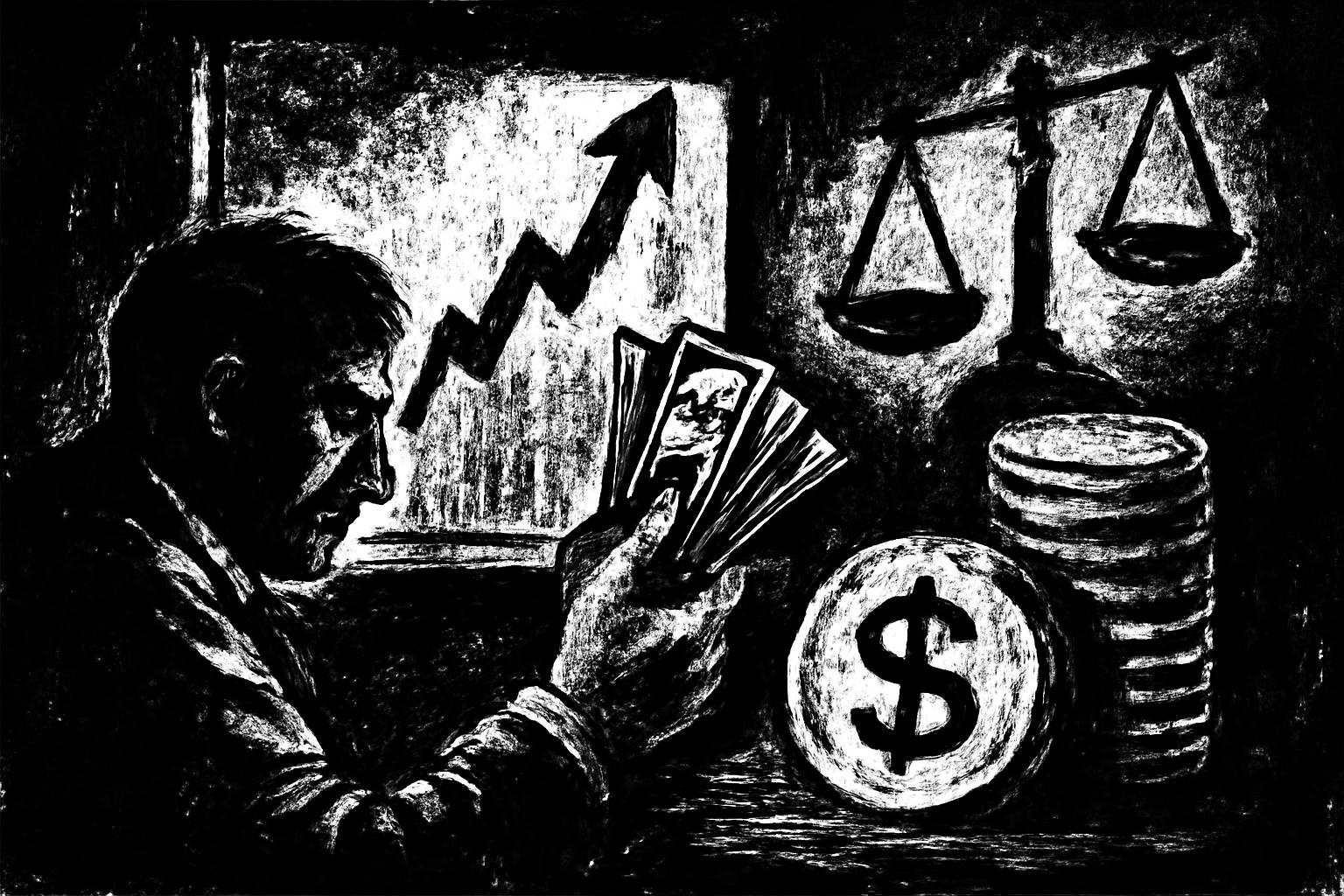German stocks hover near 24,010, eyeing a test of 24,000 as the week closes; July retail sales are due, and August inflation provisional at 2.0% looks likely to tick up on base effects from last year’s energy dip. In the US, S&P 500 hit a fresh high at 6,501, Dow at 45,636, and Nasdaq around 21,705. Asia mixed: Nikkei off ~0.3%, Shanghai up ~0.2%. In FX, the euro sits around 1.1663 against the dollar as chatter about the Fed’s independence swirls amid Trump’s interference noises. Fed watcher Waller signaled a 25bp rate cut at the Sept meeting, fueling talk he could be Powell’s successor. Oil eased in Asia but still faces weekly gains, Brent near $67.58. Dell jumped on AI-servers demand, but tumbled after hours after a soft Q3 outlook. Gap cut its full-year margin outlook to 6.7–7.0% on tariff effects of roughly 100–110 basis points. Caterpillar warned tariffs could weigh even more, potentially costing $1.5–$1.8 billion this year.
This is the sick theatre behind the numbers: a rigged carnival where the casino floor never misses a beat and the real economy gets crushed in the name of “growth.” Wall Street climbs to fresh highs, Main Street gets the pinpricks, and somehow the so-called data and policy are always just enough to keep the fantasy alive. The Fed’s independence? a myth sold to you by people who print money like it’s candy. Trump’s moves to influence policy are treated as a sideshow while the same folks pretend the central bank isn’t dancing to a political tune. Waller talks cuts as if inflation is truly conquered, all while the corporate lobbyists slam tariffs into the balance sheets to cushion the shock for the blue-chip machines that fund this rickety house of cards. Tariffs are framed as a “cost of doing business” for the entire supply chain, but you and I both know who ends up paying—the worker, the shopper, the mom-and-pop who aren’t invited to the boardroom.
The euro wobble at 1.1663 isn’t an accident either; a weaker euro is a passport for export-led fantasies while the real cost—higher import prices and squeezed households—gets swept under the rug. Dell’s AI frenzy tells you what the game is really about: capex fueled by cheap money and hype, not durable demand from everyday people. Gap’s haircut on margins, Caterpillar’s tariff bill, those aren’t anomalies; they’re the price tag for protectionism and financial engineering. And let’s not pretend the inflation blip is anything but a base-effect mirage—artificially propping up the narrative that policy is doing something while real wages stay flat and job security drips away.
So here you have it: numbers shuffled to favor a status quo that bleeds the majority while rewarding the insiders. The market’s “clarity” is a smoke screen; the punchline is the same old con—keep the bets big, keep the money printing going, and pretend you’re guiding the world toward stability while the clock ticks on the working class. Wake up, question every number, demand accountability, and stop treating this as a legitimate triumph of the economy.
